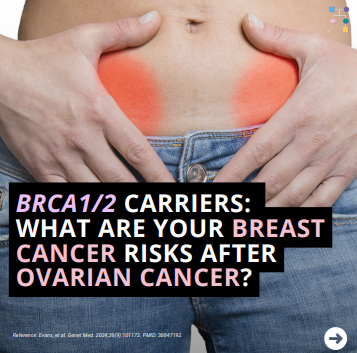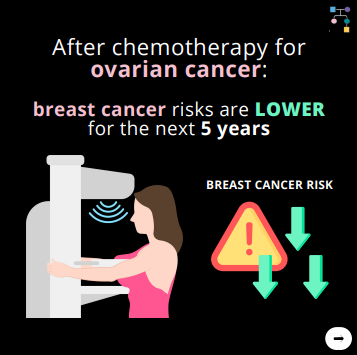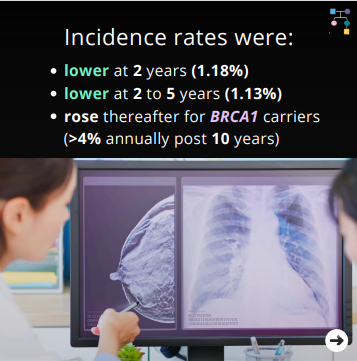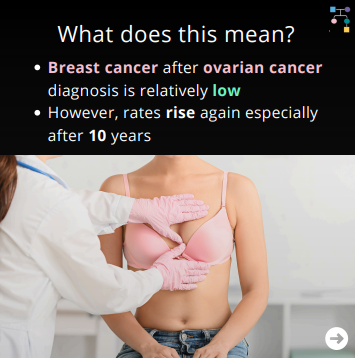




As highlighted in the latest ICARE newsletter, a recent study evaluated breast cancer risks after ovarian cancer in BRCA1 & BRCA2 carriers.
🔍 After chemotherapy for ovarian cancer:
- Breast cancer risks are LOWER for the next 5 years.
📊 Incidence rates were:
- lower at 2 years (1.18%)
- lower at 2 to 5 years (1.13%)
- rose thereafter for BRCA1 carriers (>4% annually post 10 years).
📈 What does this mean?
- Breast cancer after ovarian cancer diagnosis is relatively low.
- However, rates rise again especially after 10.
Learn more at: https://tinyurl.com/yc8de3py
Reference: Evans, et al. Genet Med. 2024;26(9):101172. PMID: 38847192.
We also encourage you to read the full ICARE newsletter at https://inheritedcancer.net/newsletters/
